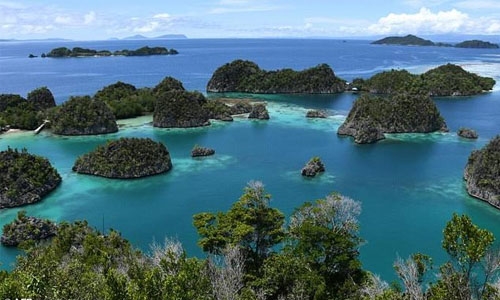Poverty in paradise: The dark side of Indonesia's new tourism hope
Raja Ampat : A tableau of white sandy beaches, colourful coral reefs and turquoise water, the islands of Raja Ampat are set to be Indonesia's next tourism hotspot -- but locals fear the government is failing both them and the environment in its development push.
Stretching across 67,000 square kilometres in Indonesia’s far east, the picture-perfect islands might be as close to paradise as visitors can find.
"It’s amazing. We’ve been to millions of islands and I would say it’s the most beautiful one," Canadian Angelika Redweik-Leung said at a lookout above the Pianemo island group.
Raja Ampat -- which means Four Kings -- is made up of 1,500 islands and is home to about 1,400 varieties of fish and 600 species of coral -- making it one of the most biodiverse marine habitats on earth.
Indonesia's government is intent on turning the area into a tourism hotspot, building hotels, restaurants and investing in new harbours.
But on a palm-fringed island about two hours boat ride from Raja Ampat's capital Waisai, villagers still live in simple huts that lack electricity and clean water, while the nearest high school is scores of miles away.
Locals told AFP they had seen no improvements to their lives despite the dramatic rise in visitors. According to government estimates around 15,000 tourists now come to the area each year -- up from less than 5,000 in 2010.
"They've hurt us indigenous people. They took our land, our water and our forest. We feel betrayed," Paul Mayor, chief of the island's Byak Betew tribe, said of the government's tourism drive.
"That's our land, our ocean, which now is a world-class tourist destination, but we've gained nothing from the influx of tourists," he added.
Mayor also criticised authorities for failing to properly protect the area's unique ecosystem, pointing to a catastrophic cruise ship crash in March, which damaged 13,500 square metres of pristine coral reef.
The 4,200-ton Caledonian Sky ran aground near the island of Kri carrying 102 passengers and 79 crew, but half a year later no one has been held accountable.
Related Posts

